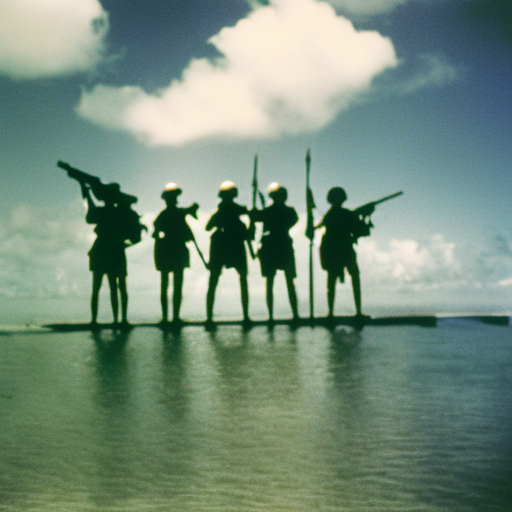Summary:
The Guadalcanal campaign was a major military campaign fought between the United States and Japan in the Pacific Theater during World War II. It took place from August 7, 1942, to February 9, 1943, on the island of Guadalcanal in the Solomon Islands. The campaign was a significant turning point in the war, marking the first major offensive by Allied forces against the Japanese and leading to the eventual defeat of Japan in the Pacific.
Background:
After the attack on Pearl Harbor in December 1941, Japan rapidly expanded its control in the Pacific, capturing numerous islands and establishing airfields to threaten Australia and cut off Allied supply lines. Guadalcanal, a strategically located island, was chosen by the Allies as the first target for a counteroffensive. The objective was to seize and secure the airfield on the island, denying its use to the Japanese and establishing a base for further operations.
The Battle for Guadalcanal:
The campaign began on August 7, 1942, with the landing of US Marines on Guadalcanal. The initial assault was successful, and the Marines quickly secured the airfield, which they named Henderson Field. However, the Japanese launched a series of counterattacks in an attempt to retake the airfield and drive the Americans off the island.
The battle for Guadalcanal was characterized by intense fighting on land, at sea, and in the air. Both sides suffered heavy casualties and endured harsh conditions, including tropical diseases, lack of supplies, and constant bombardment. The fighting was fierce and often hand-to-hand, with neither side willing to give ground.
Naval Battles:
The campaign also witnessed several major naval battles, including the Battle of Savo Island, the Battle of Cape Esperance, and the Battle of Guadalcanal. These naval engagements were crucial in determining the outcome of the campaign. The US Navy, despite initial setbacks, eventually gained control of the waters around Guadalcanal, preventing Japanese reinforcements from reaching the island and providing crucial support to the ground forces.
Conclusion:
After months of intense fighting, the Japanese were unable to retake Henderson Field, and their attempts to reinforce their troops on the island were repeatedly thwarted. By early 1943, the balance of power had shifted in favor of the Allies. The Guadalcanal campaign marked a turning point in the Pacific War, as it was the first time the Japanese had been forced to abandon a strategic objective. It also boosted the morale of the Allied forces and demonstrated that the Japanese could be defeated.
The Guadalcanal campaign was a significant victory for the United States and its Allies, but it came at a high cost. Both sides suffered heavy losses, with thousands of soldiers, sailors, and airmen losing their lives. The campaign also highlighted the challenges of fighting in the Pacific, including the harsh environment, logistical difficulties, and the tenacity of the Japanese forces.
In the broader context of World War II, the Guadalcanal campaign marked the beginning of the end for Japanese expansion in the Pacific. It paved the way for further Allied offensives, ultimately leading to the liberation of the Philippines and the defeat of Japan. The lessons learned from Guadalcanal also shaped future military strategies and tactics in the Pacific Theater.












